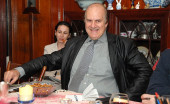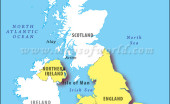Re Ian Bremmer 'Could third-party candidates upend the 2024 US election?' 3 April The current political movement in the USA…
Kimon Valaskakis and Angéline Fournier on Canada at 150
Written by Diana Thebaud Nicholson // March 31, 2010 // Canada, Kimon Valskakis, Politics, Public Policy // Comments Off on Kimon Valaskakis and Angéline Fournier on Canada at 150
The English outline (not published) of the op-ed that appeared in La Presse (see below)
Kimon Valaskakis and Angéline Fournier:
WILL CANADA 150 MATCH AYLMER ‘91?
• Kimon Valaskakis is a former Canadian ambassador to the OECD and the President of the New School of Athens focused on the reform of global governance. He was a speaker at the 1991 Liberal Aylmer Conference. Angéline Fournier, an international lawyer, is president of Maeva Investments and was also present at the Aylmer Conference
• The 1991 Liberal Conference at Aylmer was a seed event, leading to the Red Book which allowed the Liberals to win three successive majority governments and a page in the history books as a textbook example of successful deficit reduction. Can the recent Liberal 150 Nonferrous lead to similar results or will it be soon forgotten as just another talk fest ?
• To begin with let us consider contextual differences between Aylmer 1991 and Montreal 2010. Aylmer occurred before the Internet. Montreal 2010 was webcast with skypers, bloggers and tweeters participating from afar. The tsunami of information now available through the internet makes the general population much more blasé and therefore less susceptible to clichés and vanilla flavors offered by political parties, not just in Canada but all over the world. Voters are skeptical of all governments. To attract their attention, let alone convince them, requires a much greater effort of persuasion.
• How can Canada 150 become a true seminal event ? Obviously there will be follow ups, regional conferences, policy conventions etc. But in order to get the maximum juice out of the 2010 event, three elements are needed
• First : FOCUS. The Liberal 150 conference produced some valuable ideas but many of them can be found on the Web and are not the monopoly of the Liberal Party. A small integrating team must connect the dots, make links between the various topics discussed and come up with coherent policy briefs. It is not enough to let a thousand flowers bloom. They have to be landscaped into a garden especially given the fact that there are many contradictions in what was discussed and proposed. Take the job challenge. Forecasts alternate between announcing, on the one hand, imminent job shortages and, on the other, jobless growth. According to this second view, the combined effect of lower demand, outsourcing to Asia and increasing automation will allow us to more with less including more with fewer workers. Which is it ? The different policy implications coming out of these opposing assumptions are enormous.
• Second : A KILLER CONCEPT. The attempt to focus, to integrate, to come with action plans must eventually see the light in the form of a central mobilizing idea. Clinton won in 1992 with “economics as if people mattered” The 1993 Liberals were elected with the promise of embracing and taming globalization, Obama won in 2009 with a message of hope “Yes we can” . What will be the Liberal Concept for 2010 and beyond ? Lame slogans such as
• Third : CANADA MUST BE SEEN IN A GLOBAL FOCUS. The killer concept, the bold program must also be feasible . This means it must fit well within the global context. This is where most conferences fail. They pay lip service but do not pay real attention to what is happening elsewhere. Further, there is an implicit assumption that voters face a multiple choice future with unlimited degrees of freedom. All we have to do is click on those features we like and peremptorily exclude what we don’t. This is of course absurd. We live in a multi-stakeholder world where Canada, because of its small population is no longer a major economic player. We have to recognize and accept these constraints. However, at the level of ideas and values Canada has much to offer. There is a such a thing as a Canadian Model which is admired by the world. It is presently dormant and Canada’s image is not what it used to be. But this can change, in the same way that the US image abroad changed when Obama succeeded Bush.
Looking at 2017 is fine, but there are pressing problems which have to be resolved in 2010 and 2011. We must avoid the temptation of Utopian thinking. A number of issues will have to be resolved in the medium run and a federal election is likely in the next twelve months. For all these reasons the conclusion is obvious : Designing Canadian renewal is just beginning . The Canada 150 Conference was just a preamble. The real work starts now.
Original version of op-ed published in La Presse as Le PLC doit trouver une idée mobilisatrice
Kimon Valaskakis et Angéline Fournier
Kimon Valaskakis est ancien ambassadeur du Canada à l’OCDE et a été conférencier à la Conférence du PLC à Aylmer en 1991. Il est président de la Nouvelle Ecole d’Athenes qui vise une réforme de la gouvernance mondiale.
Angéline Fournier est avocate d’affaires internationales et Présidente de Maeva Investments inc. Elle était participante à la conférence d’Aylmer.
En 1991, la Conférence Libérale d’Aylmer a été un événement majeur qui a porté ses fruits en donnant naissance au Livre Rouge, permettant ainsi aux libéraux de remporter trois gouvernements majoritaires successifs et d’écrire une page d’histoire par l’élimination du déficit, maintenant cité en exemple à travers le monde. La Conférence Libérale Canada 150 , qui s’est tenue récemment, à Montréal donnera t-elle des résultats semblable ou sera t’elle vite oubliée ? Certes le contexte de 1991 et de 2010 n’est pas le même : Aujourd’hui, la population, exposée à un « tsunami » d’informations désormais disponibles sur le web, devient plus blasée, moins sensible aux clichés à saveur de vanille, et par conséquent plus critique. Le convaincre, demande un effort accru de persuasion d’autant plus, qu’en 2010, le politicien doit aussi convaincre, des acteurs non étatiques puissants et mobiles.
Comment donc, dans ce contexte, Canada 150 peut-il devenir un événement marquant ? Il y aura, sans doute, des suivis, des conférences régionales et des conventions de politiques. Mais pour que cette Conférence ait le maximum d’impact trois éléments doivent êtres réunis :
Premièrement: UN RECENTRAGE.
Les idées présentées lors de la Conférence 150 sont certes intéressantes, mais plusieurs sont déjà accéssibles sur l’ Internet et ne sont pas le monopole du Parti libéral. Pour récolter les fruits de cette conférence, un petite équipe de synthèse devra apporter une cohérence vis a vis des divers thèmes discutés et proposer des politiques appropriées car la Conference a aussi révéle quelques contradictions. Un exemple : le défi de l’emploi. Allons nous vers des pénuries d’emplois imminentes ou une croissance sans emplois. Selon cette deuxième thèse, l’effet combiné de la baisse de la demande, de la délocalisation vers l’Asie et l’automatisation accrue nous permettra de faire plus avec moins, dont plus avec moins de travailleurs. Les conséquences de ces diagnostiques contradictoires sont énormes.
Deuxièmement: UNE IDÉE MOBILISATRICE.
Une idée centrale mobilisatrice est indispensable. Nous parlons ici de concepts authentiques et pas des slogans usés. Clinton a remporté l’élection de 1992 avec : «economics as if people matter» En 1993, les libéraux ont été élus avec la promesse de maitriser la mondialisation, et Obama en 2009 avec un message d’espoir : “Yes we can“. Quel sera le concept libéral pour les années à venir? Il faudra trouver autre chose que « maîtriser notre futur » ou « le Canada aux Canadiens »
Troisièmement: LE CANADA DANS UN CADRE GLOBAL. L’idée mobilisatrice doit aussi être réalisable. Cela signifie qu’elle doit s’intégrer dans un contexte mondial. L’électeur croit, à tort, qu’il a devant lui un avenir à choix multiples avec une marge de manoeuvre illimitée. Il coche ce qui lui plait et rejette tout ce qui déplait. Ceci est bien sûr irréel. Nous vivons dans un monde de multiples décideurs. Nous devons reconnaître et accepter les contraintes mondiales, y compris une réduction du poids economique et politique du Canada. Cependant, c’est au niveau des idées et des valeurs, que le Canada a beaucoup à offrir. Il existe un modèle canadien qui fait l’admiration du monde, même si l’on constate qu’il est malheureusement en veilleuse actuellement et que l’image du Canada à l’étranger s’est considérablement dégradée. Mais tout cela peut changer, de la même manière que l’image des Etats-Unis à l’étranger a changé quand Obama a remplacé Bush.
Le défi est de mettre en place des politiques à application immédiate, alliées avec une vision à long terme. Nous avons pris du retard dans plusieurs domaines : éducation, IT, positionnement dans les économies émergentes, etc… Il est urgent d’ agir et viser l’excellence comme notre meilleure stratégie. Dans ce contexte l’horizon 2017 est à la fois trop lointain et trop rapproché.Le travail de renouvellement du Canada ne fait que commencer et la Conférence Canada 150 n’était qu’un préambule.
March 23, 2010, Footnote:
Susan Delacourt: Aylmer, reconsidered
(Toronto Star) At this morning’s briefing about the Liberals’ Canada 150 conference planned for this weekend, an official *** stressed that it often takes time to figure out significant events in a party’s history. Case in point — the 1991 Aylmer conference, which in retrospect was seen as pivotal to the Liberals’ preparation to govern. The official mentioned how Aylmer was written up in the Toronto Star in the immediate aftermath. Here’s the story… I looked it up when I got back to our office here. (That *** denotes a correction I made to an earlier version of this post, when I accidentally strayed off the rules of engagement re: sourcing this briefing. Apologies. I filed in haste.)
Toronto Star Day: Monday Date: 11/25/1991
Liberal well runs dry at policy conference
By William Walker TORONTO STAR
AYLMER, Que. – The Liberal plan was to bring together thinkers and policy experts for a non-partisan conference to gather up all the brightest and best ideas for the 1990s.
But many delegates left the Liberals’ weekend Aylmer conference concerned that no great new ideas had emerged.
“The question I have is how are we going to start answering the disillusionment out there? We have to start addressing that and I’m concerned we’re not doing it here,” delegate Tim Murphy told the conference in a comment from the floor yesterday.
“I think it was more of a solid learning process,” said Peter Donolo, an aide to Liberal Leader Jean Chretien.
“I think the idea was to get some thinking going and any ideas would be a bonus,” said delegate Allan Golombek, a Toronto consultant.
“Is it concrete ideas you’re looking for or ideas whose time has come?” asked delegate Nancy Hawley, a Toronto poverty activist. “There are not a lot of new ideas, I mean, we’ve heard them before, but they’re ideas whose time has come.”
Even Chretien, when asked three times by reporters to name one specific bright new idea he’d heard, could only speak of “a new world” and say “we have to move in a new direction.”
Some major challenges were identified. First among them was how Canada could remain competitive in an economic war being waged on the global stage without losing its national identity of offering citizens protection through strong social policies such as medicare.
There was also talk about public cynicism in the political process, how national institutions might be reformed and how Canada needs to better educate its youth and train its work force.
Murphy, a party activist and Toronto lawyer, said most of the conference’s three solid days of policy discussions focused on problems these issues posed for Canada, rather than potential solutions.
“At this stage, we’re still talking about the politics of despair and not the politics of hope,” he said of the discussions, which at times lapsed into partisan complaints about where Prime Minister Brian Mulroney has led the country in his seven years in office.
Strategist Hershell Ezrin, once principal secretary to then-premier David Peterson in Ontario, had a telling answer when asked by a delegate how Liberals should communicate their good intentions.
“If we knew what we wanted to do, it would be a lot easier to communicate it to everybody else,” Ezrin said.
As Murphy prepared for his five-hour drive home last night, he had only two new policy ideas on his mind: The concept of a better education for our high school students to make Canada’s work force more competitive. A national lunchbox program in schools to help make it easier to learn for children who come to class hungry.
Golombek said he came away impressed with the idea of spending more money on research and development, although he admitted that concept is hardly new.
He also liked American economist Lester Thurow’s suggestion that Canada get an economic game plan, although exactly what that should be was not explained.
Hawley said she was impressed that Liberals at the conference seemed to understand that economic policy and social policy are not competitors or right-left issues, but must go together.
Many delegates agreed the conference was not as non-partisan as it was billed. Virtually every delegate was a Liberal, including former candidates, former MPs, party workers and youth members.
Among the names: former cabinet minister Marc Lalonde; Saskatchewan Liberal Leader Linda Haverstock; Liberal Senator Allan MacEachen; and Eddie Goldenberg, Chretien’s top aide; along with other Liberal MPs, their assistants and backroom organizers.
Murphy said it would have been be extremely difficult to keep the political people away from such a conference, and said he hopes only that the process will begin to “chip the rust off” the party’s policy formation process.
Sheila Gervais, the Liberal party’s executive director, said the party will take the weekend’s transcripts and see what can be salvaged.
The plan is to take the best ideas from the weekend and put them before a party policy convention in February, where Liberals can vote on whether to adopt them.
The test will be to see exactly which February policy resolutions bear the stamp: Made in Aylmer.



